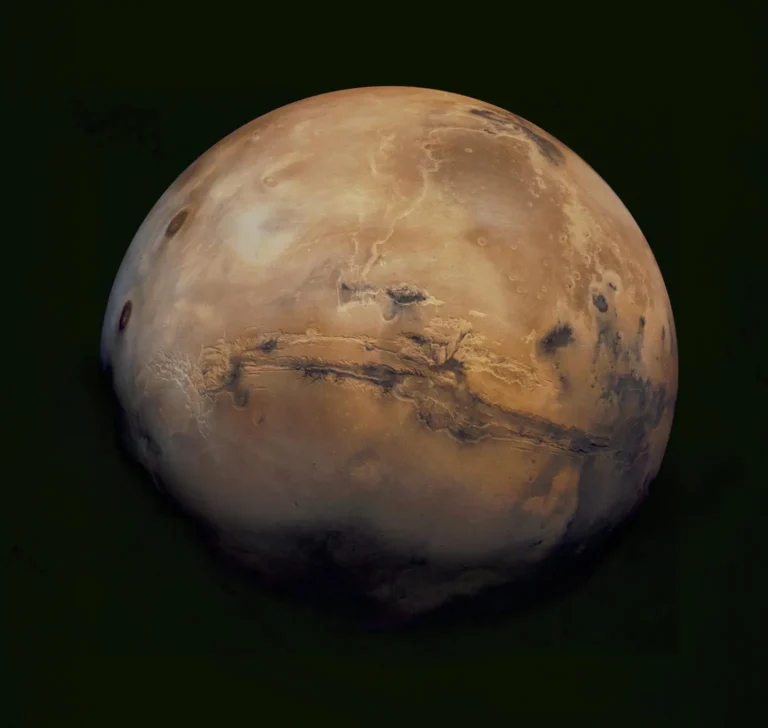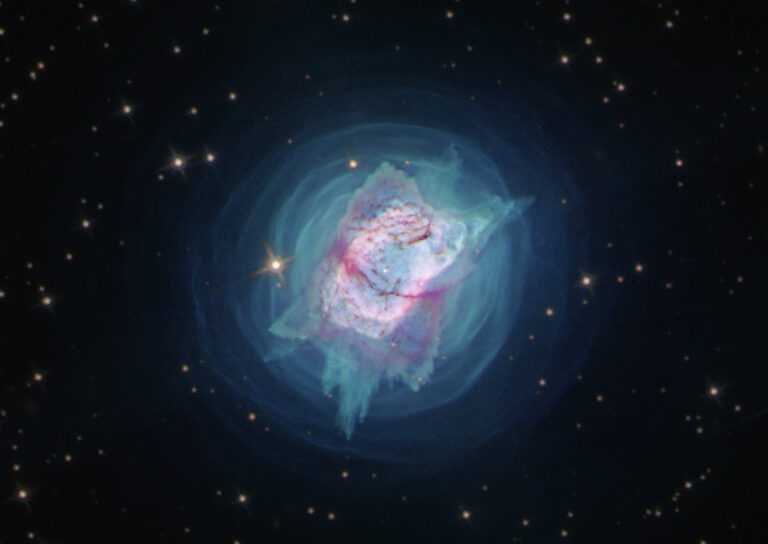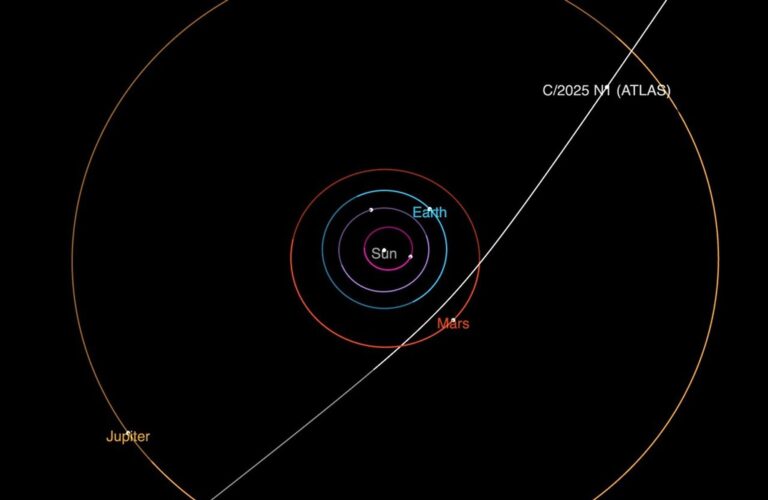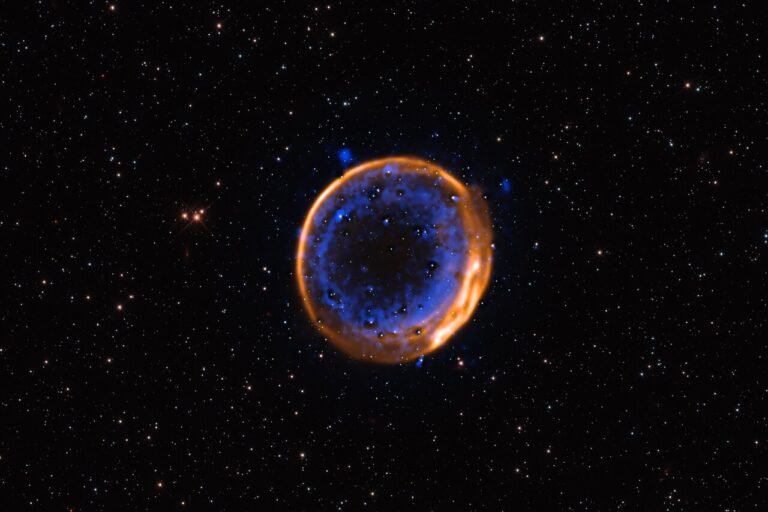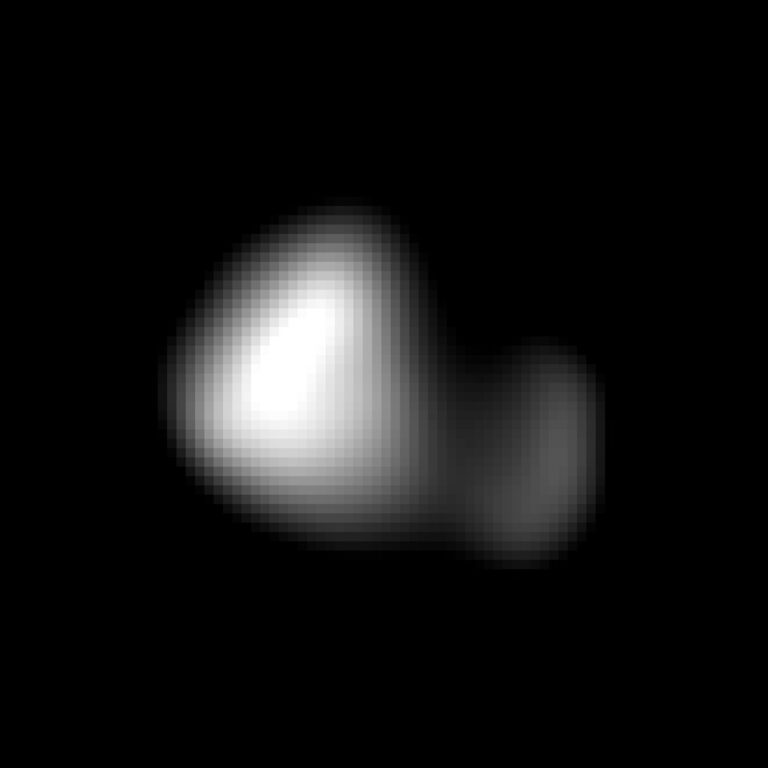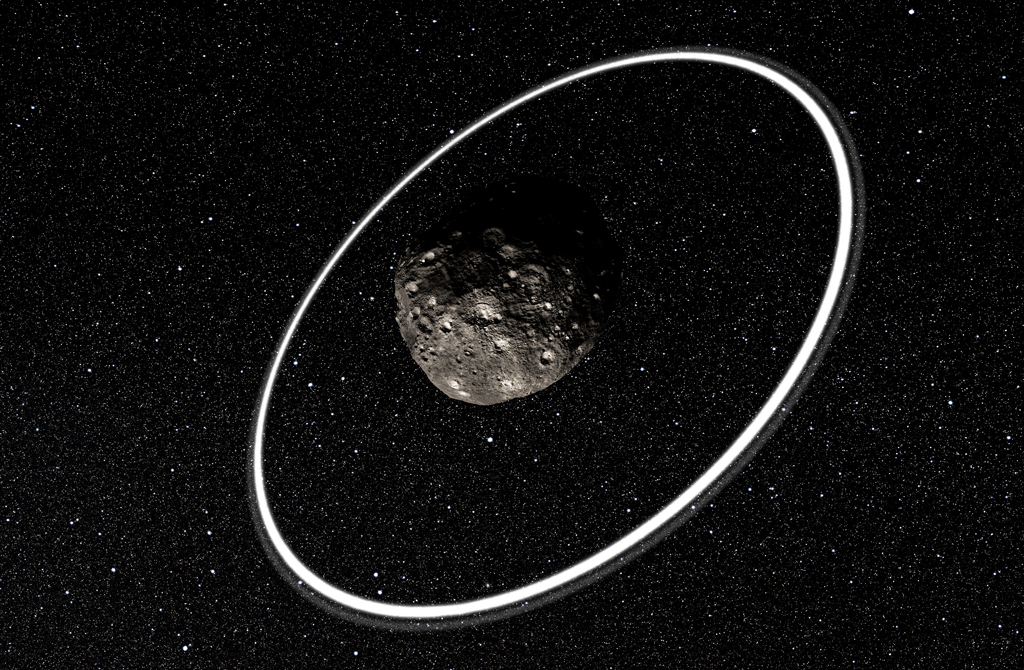
Key Takeaways:
The end of 2013 through fall of 2014 had a lot of important discoveries. Unfortunately, we can fit only the past year’s top 10 astronomy stories in the pages of Astronomy magazine. Deciding which of the big discoveries announced in the past 12 months to include is always a difficult task. We also wanted to showcase the next five important finds announced from 2014. So, here they are in chronological order.
Study challenges black hole theory
by Karri Ferron
Astronomers believe that every large galaxy has a supermassive black hole at its center. Although they can’t observe these behemoths directly, scientists can study “active” black holes by focusing on the radiation emitted when they feed on surrounding gas. But not every black hole appears the same despite their similar nature. To explain this, scientists developed a unified model of active galactic nuclei, which states that every supermassive black hole and its accretion disk is surrounded by a doughnut-shaped cloud of dust called a torus; if viewed edge-on, the torus obscures the radiation emitted near the black hole, while a torus seen face-on doesn’t.
Yet a new study of more than 170,000 supermassive black holes found within data from NASA’s Wide-field Infrared Survey Explorer challenges this model. Astronomers expected to observe a random assortment of unobscured and obscured black holes among the galaxies, with no propensity for some to clump into clusters more than others. But the results, which will appear in a future issue of The Astrophysical Journal, show that black holes obscured by dust from our viewpoint are more clumped together than those whose radiation is visible. The researchers note that these obscured black holes also reside in galaxies with larger halos of dark matter, the mysterious substance that makes up the majority of matter in the universe; larger halos with more gravitational influence cause more clustering.
“Our finding revealed a new feature about active black holes we never knew before, yet the details remain a mystery,” says co-author Lin Yan of NASA’s Infrared Processing and Analysis Center in Pasadena, California. “We hope our work will inspire future studies to better understand these fascinating objects.”
Astronomers watch the Sun’s corona heat up
by Liz Kruesi
The Sun is a complex body of hot gas and magnetic fields, and its surface reveals the interactions below. Granules are small 1,000-mile-wide (1,600 kilometers) blobs marking the tops of columns of moving gas; hot material rises to the surface where it spreads out, cools, and falls down the column. These structures pockmark the entire solar surface, littered with occasional sunspots – cooler regions of gas and strong magnetic fields that break through the surface.
But scientists don’t know how the active surface affects the Sun’s outer atmosphere, called the corona. This diffuse surrounding gas has temperatures of 1 to 2 million degrees, while the surface is a much colder 9940° Fahrenheit (5500° Celsius). New observations presented June 2 at the American Astronomical Society meeting in Boston point to a possible cause: “ropes” of magnetic fields moving from the Sun’s interior to the surface.
Using the Big Bear Solar Observatory’s New Solar Telescope to capture images every 15 seconds, Santiago Vargas Domínguez of the New Jersey Institute of Technology and colleagues watched in August 2013 as a handful of granules were stretched and warped while a jet of material surged through the lower atmosphere. They think a taut rope (6,000 miles [10,000km] long) of magnetic fields began moving up through the Sun’s interior. This tube deformed the granules’ columns as it reached the surface. It continued rising through the surface while interacting with magnetic fields in the lower solar atmosphere. The interaction released heat into the atmosphere, and then the rope broke, sending a jet of gas out that moved at 70,000 mph (110,000 km/h) and lasted about an hour.
Weather forecasts on brown dwarfs
by Liz Kruesi
Called “failed stars,” brown dwarfs form with insufficient mass to fuse hydrogen into helium in their cores – a process that defines a star. But these objects aren’t planets either. Instead, brown dwarfs bridge the gap between stars and planets and have masses at least 14 but no more than 80 times that of Jupiter.
Brown dwarfs slowly radiate the heat they were born with, which glows in infrared. Astronomers thus use infrared-detecting telescopes to find and examine these celestial bodies. Two studies reported in January discuss observations of these objects and focus on their changing weather.
One, announced January 7 at the American Astronomical Society meeting in Washington, D.C., concludes that most brown dwarfs have turbulent storm systems. The scientists monitored 44 brown dwarfs for 20 hours each with NASA’s Spitzer Space Telescope to track brightness variations. Half of the objects exhibited such changes. “As the brown dwarfs spin on their axis, the alternation of what we think are cloud-free and cloudy regions produces a periodic brightness variation that we can observe,” describes co-author Stanimir Metchev of Western University in Ontario, Canada. “These are signs of patchiness in the cloud cover.”
But due to random orientations, argue the astronomers, most of those 44 brown dwarfs probably have turbulent weather patterns, and only those 20 orient in such a way that Spitzer could see atmospheric changes.
The other study appeared in the January 30 issue of Nature. Ian Crossfield of the Max Planck Institute for Astronomy in Heidelberg, Germany, and colleagues observed
the two closest brown dwarfs to Earth – WISE J104915.57-531906.1AB (also known as Luhman 16A and 16B). At just 6.5 light-years from us, the pair is bright enough for astronomers to study in detail. Crossfield’s team used a spectrograph attached to one of the units of the Very Large Telescope array to break apart the light from five-hour observations of both brown dwarfs. Because Luhman 16B’s rotation period is 4.9 hours, the scientists could detect brightness variations across a full rotation. Luhman 16A, they say, rotates slower than its sibling if their spin axes are aligned.
Crossfield and colleagues focused on one specific molecule in the brown dwarfs’ atmospheres – carbon monoxide – and tracked how this material moved throughout them. The astronomers identified bright and dark features on Luhman 16B, which they suggest are global patchy clouds. Crossfield’s team says the bright areas are regions with less cloud cover and thus let more of the brown dwarf’s interior heat through; the dark areas are regions with thicker cloud cover and therefore are cooler. The scientists interpret these brightness changes and cloud cover as part of atmospheric weather patterns, and they used these observations to create the first weather map of the brown dwarf.
Crossfield and colleagues suggest follow-up observations of additional molecule
tracers in the atmosphere to see if they’re mapping changes in temperature, cloud properties, or differences in carbon monoxide abundances across the globe.
Earth-sized world in “Goldilocks” zone
by Liz Kruesi
Nearly 500 light-years away lies a star with a world just 10 percent larger than Earth orbiting within its habitable zone (HZ) – the region around the sun where water could exist in liquid form on the exoplanet’s surface. Astronomers have found about 20 other exoplanets in their stars’ HZs, but this new one, called Kepler-186f, is the most similar in size to Earth. The new study, which appeared in the April 17 issue of Science, “shows that Earth-size planets can and do exist in the HZs of other stars,” said NASA’s Exoplanet Exploration Program Scientist Doug Hudgins during a press conference announcing the discovery.
Kepler-186f orbits a red dwarf star that is 47 percent of the Sun’s width and about 66 percent of our star’s temperature. Using the Kepler space telescope’s first two years of data, scientists found the signatures of four planets orbiting the star with periods between 3.9 and 22.4 days. These worlds lie between 0.04 and 0.13 astronomical unit from their star (where 1 AU is the average Earth-Sun distance).
An additional year of observations allowed Elisa Quintana of the SETI Institute and colleagues to tease out Kepler-186f orbiting 0.36 AU from the red dwarf. The star’s HZ extends from 0.22 to 0.40 AU, placing this newfound world near the outer edge. There, the exoplanet receives about 32 percent of the intensity of radiation from its star as Earth receives from the Sun.
Quintana’s team measured Kepler-186f’s width: 1.11 times Earth’s. Their observations, however, tell them nothing about the exoplanet’s mass, which means they cannot calculate the composition. They also can’t observe the planet with enough detail to spy evidence of an atmosphere. Whether this planet has surface water, an atmosphere, or any type of life are still open-ended questions.
Ring around a … centaur?
by Karri Ferron
When scientists planned an exhaustive campaign to observe the asteroid-like object 10199 Chariklo as it passed in front of a distant star from Earth’s vantage point, their goal was to refine the solar system body’s size and determine its shape. Chariklo, the largest member of a class of objects known as centaurs, which have unstable orbits in the region of the giant planets, lies between the orbits of Saturn and Uranus. While the astronomers did learn more about this 155-mile-wide (250 kilometers) minor planet, their results, which appeared in the April 3 issue of Nature, came as a surprise: Two dense rings encircle Chariklo.
“We weren’t looking for a ring and didn’t think small bodies like Chariklo had them at all, so the discovery … came as a complete surprise!” says lead author Felipe Braga-Ribas of the National Observatory in Rio de Janeiro. To date, scientists had only observed rings around four bodies in our solar system – those circling the gas giant planets. But scientists saw four additional dips in the occulted star’s brightness, beyond the expected one, when Chariklo passed in front of the distant sun. The extra dimming brought the rings to light in the same way this method helped astronomers discover the rings of Uranus in 1977. Analysis indicates that the two rings are about 2 and 4 miles (3 and 7km) wide separated by a 5.5-mile (9km) gap.
Although Braga-Ribas’ team doesn’t know conclusively how the rings formed, the results do answer previous questions concerning Chariklo. According to the study leader, observations between the centaur’s discovery in 1997 and today have shown changes in spectral intensity (which indicates composition) and brightness over time. A ring system made of ice that scientists sometimes see head-on but other times view edge-on would explain the data.

